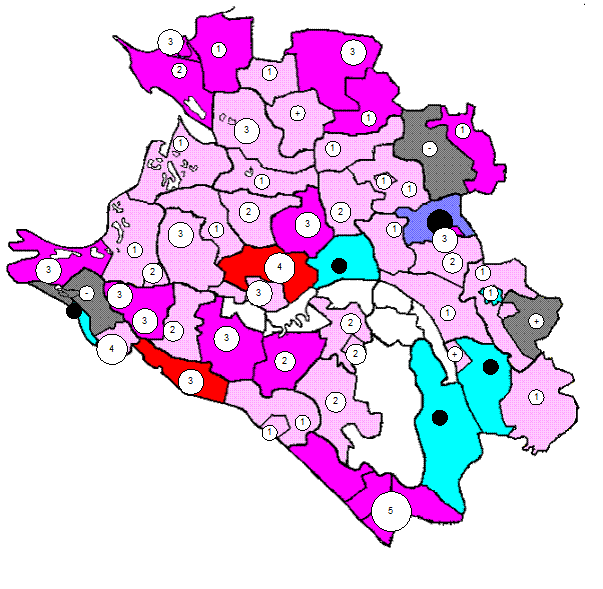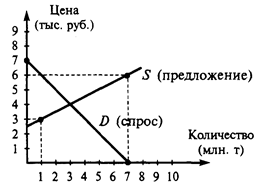LINEAR ALGEBRA
Linear algebra like several other math disciplines may be considered from two different points of view: 1) as a branch of maths of independent interest with a development and with problems of its own; 2) as a tool for other math disciplines and for math physics, A large class of math problems is generally called "linear", the simplest problem is the following: Let a and b be two given (real or complex) numbers - to find a number x that satisfies the equation ax=b. The problem has a unique solution x, if, and only if, a ^0; no solution at all if a=0, b^0; an infinity of solutions, viz., all real (or complex) x if a=0 and b=0. This statement comprises the whole theory of the problem. One of the main technical devices of linear algebra is the theory of determinants and for a long time it has been the only part of linear algebra which was studied systematically. This is the more surprising as the notion of matrix — the main object of modem linear algebra — is evidently more fundamental than that of a determinant because a determinant is only a certain number associated with a given square matrix. Whilst the notion of determinant was discovered by Leibnitz (c. 1690), the notion of matrix appeared only much later in 1854 in a paper by Cayley and independently in 1867 in a paper by Laguerre. Since then linear algebra and matrix calculus have developed into a vast domain of maths closely connected with a good many other math branches, such as the theory of groups, the theory of invariants, tensor calculus, the theory of systems of differential equations, etc. Linear algebra provides the methods of proof as well as the adequate algebraic formalism for a considerable part of analytic geometry. It has served as a model in recent developments of analysis (theory of integral equations and of linear transformation in infinite- dimensional spaces) which have considerably advanced this branch of maths and proved important in modern physics. Vocabulary
1. Answer the following questions: 1) What do we call “linear” in mathematics? 2) What is linear algebra connected with? 3) In what way are analytic geometry and algebra connected? 4) What definition can be applied to linear algebra? 5) What statement comprises the whole theory of the problem?
2. Translate from Russian into English. 1) Линейная алгебра превратилась в огромную область математики. 2) Она очень тесно связана со многими другими областями математики. 3) Один из главных технических механизмов линейной алгебры является теория детерминантов. 4) Эта теория долгое время была единственной частью линейной алгебры, которую систематически изучали. 5) Главная цель современной линейной алгебры очевидно более основательная, чем теория детерминантов.
3.Work in pairs. Discuss the problem how linear algebra developed into present form.
PART III TESTS The verb “to be”
1.My brother … in good health. A) am B) is C) are
2. He … at school yesterday. A) are B) were C) was
3. … she at home two hours ago? A) was B) were C) shall be
4. Her parents … poor, she must earn her living herself. A) was B) am C) are
5. … she … a student in a year? A) shall be B) will be C) were
6. Nick … very busy today. A) is B) am C) will be
7. … the weather fine? A) was B) were C) am
8. I … in Moscow in two weeks. A) will be B) am C) shall be.
9. My address … not difficult to remember. A) am B) is C) are
10. This book … of no interest to us. A) are B) am C) is 11. The paper … on the shelf yesterday. A) were B) was C) are
12.We … students of the medical Institute soon. A) will be B) shall be C) were
13.Helen … not in the street yesterday. A) were B) was C) are
14.This little boy … five years old. A) is B) are C) am
15. … Baikal the deepest lake in the world? A) am B) are C) is
16. She …a old sick woman. A) am B) is C) are
17. They … at the station last night. A) are B) was C) were
18. The mountains … not very high in Great Britain. A) is B) are C) was
19. … this flat comfortable? A) is B) are C) am
20. Olga and Nick … at the station in 2 hours. A) shall be B) will be C) were
21. They … good doctors in 6 years. A) shall be B) will be C) are
22. She … ill and could not go there. A) is B) was C)were
23.It … spring soon. A) will be B) shall be C) is
24. Olga … very busy tomorrow. A) is B) was C) will be
The verb “to have” (have, has, had, will have, shall have) 1. What flat… your friend…? A) do … have B) does have C) have
2. These students … English books. A) has B) have C) do have
3. He … … breakfast in the morning. A) don’t have B) have C) doesn’t have
4. Now his parents … a comfortable flat. A) have B) has C) had
5. They … English yesterday. A) has B) will have C) had
6. These students … … five examinations next year. A) will have B) had C) does … have
7. … you … more or less free time now then you … last year? A) does … have B) had C) do … have
8. We … no lectures on Sunday. A) has B) don’t have C) have
9. They usually … their entrance examinations in June. A) have B) has C) will have
10. This toy dog … a very interesting story. A) have B) has C) don’t have
11. He … … any news from his friend. A) didn’t have B) shan’t have C) had
12. They … … plenty of time to relax in summer. A) had B) will have C) doesn’t have
|




